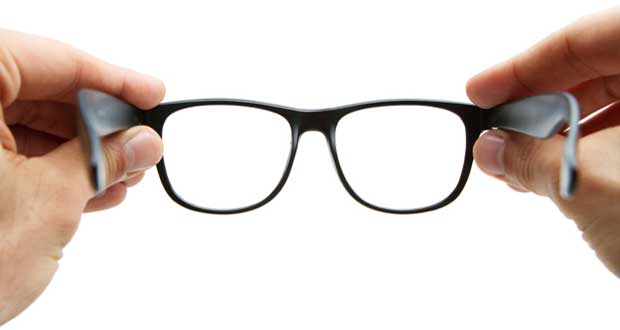Otilia Otlacan: Why has ad viewability become such a hot topic recently?
Douglas de Jager: There have been whisperings about ad viewability for a very long time, but without much action. The flurry of recent activity, I’d suggest, is largely down to Google.
On April 18th of this year Google announced to the industry that it would be rolling viewability measurement out across Google AdX. The implications for the industry are profound.
If other networks and exchanges don’t provide similar viewability measurement, then the publishers with the highest viewability rates will migrate to AdX — where they will be rewarded for their higher viewability rates. Leading advertisers will similarly migrate. With typical CTRs of only 0.08% (and typical mouse-movement rates of only 3%), information about ad viewability allows advertisers to optimise their buying across the long tail in a way that they have never been able to before. The publisher and advertiser migrations will lead to further migrations. Through this vicious circle of migrations the importance of the other networks and exchanges will quickly erode. And without a healthy ecosystem of competing exchanges and networks, the DSPs and SSPs become markedly less important. The ancillary service providers, similarly, will tend to irrelevance.
The talk in the industry is about how to defend against Google’s push for total dominance.
Otilia Otlacan: There are now several viewability measurement companies, all making competing claims about their accuracy across different browsers, particularly in unfriendly iframes. How different are the offerings of the different companies?
Douglas de Jager: As things stand, there appear to be only two ways to measure ad viewability.
The first way to measure ad viewability is by the geometric approach, an approach used by almost everyone in the industry. This approach typically involves comparing the position of the four corners of the ad relative to the host webpage and then comparing the position of the four corners of the browser’s viewport relative to the host webpage.
With these two comparisons one may say whether an ad is within the viewport. A variant of this approach involves comparison with the screen rather than the host page. Comparison is also sometimes made between the ad and the mouse cursor, and then the mouse cursor and the viewport.
comScore controls a key set of patents which govern the geometric approach to measuring ad viewability.
Because of a browser security policy — termed the same origin policy — the geometric approach is limited in its effectiveness when ads are embedded in unfriendly (cross-domain iframes). When ads are served in unfriendly iframes then any viewability script will typically be unable to communicate with the host page, meaning that the relative position of the ad to the host page cannot be retrieved. In particular, the position of the ad relative to the host page cannot be determined across Internet Explorer, Chrome and Safari. This difficulty has compelled several companies to exploit a notable security hole in Internet Explorer in order to provide viewability measurement. When ads are embedded in unfriendly iframes there is currently no geometric solution for WebKit-based browsers, like Chrome and Safari.
The second way to measure ad viewability is to monitor browser optimisations. With the rise in rich internet applications and mobile browsing, browsers have been under increasing pressure to do more with less processing power. By monitoring how a browser allocates resources to render an ad, one can determine what proportion of the ad is in view.
Because no appeal is made to precise geometric position, the browser-optimisations approach does not suffer the limitations of the geometric approach. The browser-optimisations approach may be used to measure the viewability of ad impressions across all major browsers even when the ads are embedded in (nested) unfriendly iframes.
spider.io has an international pending patent for the browser-optimisations approach dating from June, 2011.
Otilia Otlacan: What is your opinion on the IAB’s Safe Frame Initiative? How will it impact on the way ad viewability is measured?
Douglas de Jager: The IAB’s Safe Frame Initiative is aiming to produce an open-source code base that will allow information to be passed from the host webpage to scripts embedded in unfriendly iframes.
If safe frames come to be adopted throughout the industry, then the information passed from the host webpage should allow advertisers to use the geometric approach to measure ad viewability across iframes in all browsers — to achieve the same level of coverage that the browser-optimisations approach provides. It is important to note: whilst the safe frame code-base is intended to be open-source, any use of the geometric approach via safe frames would still probably be subject to comScore’s patents.
Are safe frames likely to be adopted at the necessary scale? There is reason to think not. Consider Google’s AdX, for example. Google has unfettered access to the host webpages across which AdX ads are included. However, Google locks AdX ads up in DoubleClick iframes. This means that Google can determine ad viewability using the geometric method, as Google can see out from its own iframes, but advertisers who advertise through AdX cannot use their own independent scripts to measure ad viewability via the geometric method. It would be very surprising if Google chose to change DoubleClick iframes to safe frames, thereby giving up control of viewability measurement across AdX.
Finally, there is the small matter of misaligned incentives. The Safe Frame Initiative requires advertisers to trust publishers not to try skew the information passed to scripts, and thereby the viewability classifications. Advertisers are essentially trusting publishers to tell them whether their ads are in view. It is difficult to see how this might happen without creating advertiser demand for a new class of service provider which polices deviant publishers.
Otilia Otlacan: Do you have any recommendations on best practices for publishers who are looking to minimize the impact of ad viewability issues upon their ad revenue?
Douglas de Jager: Independent of any publisher efforts, advertisers are already starting to measure the viewability of their ad impressions. Advertisers are then using these measurements to optimise their ad buying. My advice to publishers would be that they try perform internal viewability audits, and they try increase viewability rates. This is how publishers will retain existing ad spend, and it’s how publishers will win more spend.
A further point worth noting: Google’s efforts will soon make advertisers come to treat ad viewability as a requirement. This is going to mean that publisher are ultimately going to have to provide their direct-sales advertisers with viewability reporting—either directly or through a trusted third party. The more proactive publishers may want to push this sooner rather than later.
About Dr. Douglas de Jager
spider.io is a London-based technology company which identifies when display ads are legitimately seen by human visitors.
spider.io distinguishes when human website visitors are interacting legitimately with web content from other types of visitor interaction with web content—often by automated or systematic visitors and also often as a result of deviant publisher activity. When a human visitor is legitimately accessing content through a web browser, spider.io also accurately identifies when content is viewable within the browser’s viewport.
More details may be found here.









